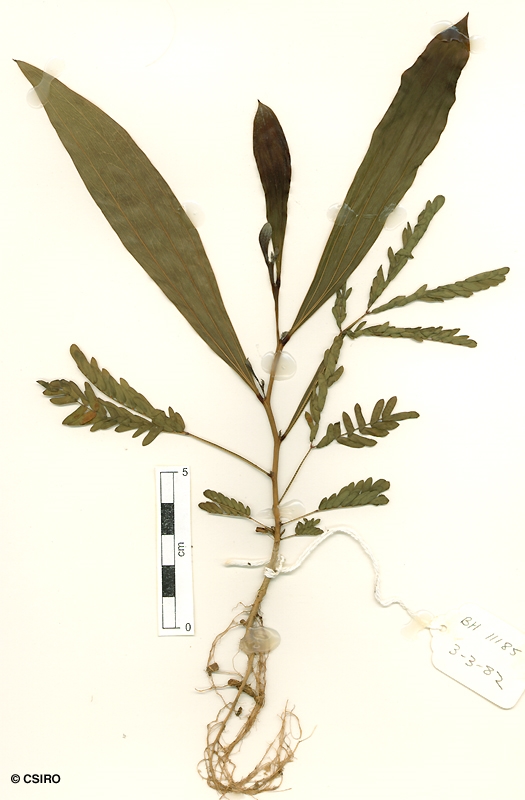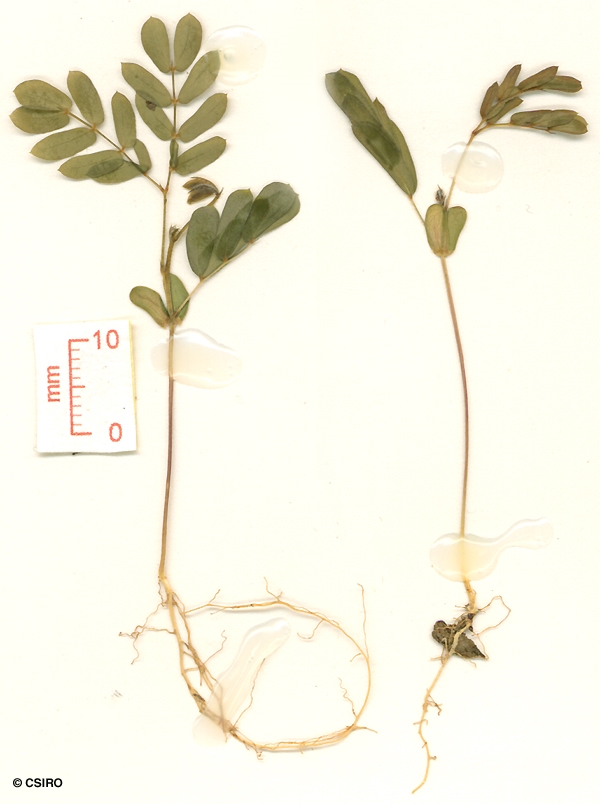Australian Tropical Rainforest Plants - Online edition
Acacia mangium Willd.





Willdenow, C.L. von (1806) Sp. Plant. 4: 1053. Type: Description and figure in Rumphiuss Herbarium Amboinense.
Black Wattle; Broadleaf Salwood; Hickory Wattle; Sally Wattle; Wattle; Wattle, Black; Wattle, Hickory; Wattle, Sally; Brown Salwood
Blaze very fibrous.
Leaves green, phyllodineous, twigs angular. Leaf blades about 13-20 x 3-7 cm. One side of the leaf blade almost straight and the other more strongly curved. Veins longitudinal, anastomosing, three or four veins usually more prominent than the rest. Two veins adjacent to the straighter blade margin adhere to one another for a greater distance than the veins adjacent to the curved side. A small gland usually visible on the upper side of the leaf blade-petiole junction.
Cotyledons oblong or obovate, about 4-5 mm long. First leaf pinnate, second leaf bipinnate. By the fourth or fifth leaf stage: leaves bipinnate, petiole expanded and flattened. At the tenth leaf stage: leaves phyllodineous, narrowly elliptic or narrowly obovate, slightly unequal-sided, glabrous, usually three main veins run from the base to the apex; a gland usually present on the margin of the leaf blade close to the junction with the petiole; stipules small, triangular; stem usually strongly winged. Seed germination time 8 to 2933 days.
Occurs in NT (introduced and naturalised), CYP, NEQ and CEQ. Altitudinal range from sea level to 750 m. Grows in well developed lowland and upland rain forest. This species is favoured by disturbance, it grows very rapidly and is a typical component of rain forest regrowth particularly on the coastal lowlands on soils derived from metamorphic rocks. Also occurs in Malesia.
A fast growing species of the tropical lowlands. Thrives on disturbance to tropical rain forest. Often produces quite good logs and yields a useful timber.
This species has been used extensively in SE Asia for reforestation purposes.
Wood specific gravity 0.69. Cause et al. (1989).





